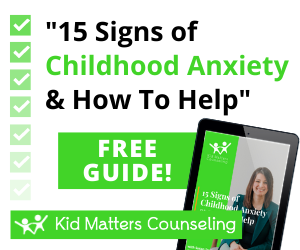Tired of trying to set limits that don’t work? Well you’re not alone! Seeing your child engage in the same behaviors over and over again and not having an effective means of clearly communicating your need for them to stop can be extremely frustrating.
Sometimes, right as you figure out what to say, you’ll either find that the moment has completely passed or you’ll find yourself saying something totally ridiculous that you’ll later have a really hard time enforcing.
Providing children with consistent limits gives them a sense of predictability which, in turn, provides them with feelings of safety and security. Having a safe and predictable environment, where the child knows what is expected of them, especially when it comes to his/her behaviors, will reduce the likelihood of extreme behaviors or never-ending negotiation tactics.
By using this method of limit setting, children will be able to find acceptable outlets for their behaviors as you provide opportunities for them to engage in greater responsibility and self-control.
3-Step Limit-Setting Method
“A” – Acknowledge the feeling (or desire)
“C” – Communicate the limit
“T” – Target alternatives
A.
By stating out loud how your child’s feeling in the moment, you are showing your child that you understand what he/she is feeling and that his/her feelings are in fact valid and accepted by you (note I said feelings and not behaviors).
When your child hears that you know how he/she is feeling, your connection to your child with being strengthened in the moment, and it will lessen the intensity of his/her feelings.
Example: “Henry, I see that you are getting angry because you want more time on the iPad.”
C.
Communication of the limit (should be brief and to the point.)
The limit should be communicated in as few words as possible and the words you use should be age-appropriate. Presenting the limit in a short and sweet manner will keep your child’s attention and not provide any wiggle room for a counterargument.
Example: “It is now time for dinner. You get 30 minutes of iPad time per day.”
T.
Then, target acceptable alternatives in order to teach your child that he/she is in control of making a different decision (you have already picked the alternatives and are okay with them). This will provide him/her the opportunity to engage in self-direction and practice self-control.
Example: “You can choose to turn off the iPad all by yourself, or you can choose for me to turn it off for you.” Or, “You can choose to put the iPad away, or you can choose for me to put it away for you.”
Example: “I see that this is a really hard decision for you. I am going to count down from 5 and if you have not made a choice, then you are choosing for me to choose for you. 5, 4, 3, 2, 1. I see you’ve chosen for me to choose for you.” (Take the iPad and put it away.)
Know that in this moment, your child will likely have a meltdown or get angry. It is extremely important for you to follow through on this limit and, in time, your child will learn to expect that when you set a limit, you stick with it, thereby decreasing their need to negotiate or escalate.
—–
References: Bratton, Sue C., Landreth, Garry L., Kellam, Theresa, & Blackard, Sandra R. (2006). Child Parent Relationship Therapy (CPRT) Treatment Manual. New York: Routledge.
Photo by Ludovic Charlet on Unsplash

Lindsey Holsten
Child Therapist
Kid Matters Counseling has trained therapists ready to help both kids and parents walk through the tough moments in life.
End the frustration & the confusion and let's work together! SCHEDULE APPOINTMENTNew Clients Call: (855) 586-1802
Current Clients: (855) 543-7687
Ask Us Anything!
We help anxious kids and frustrated parents. We serve Hinsdale & the Western Suburbs of Chicago.
Made with ♥︎ in Hinsdale, Illinois for Chicago
Built By Brand Your Practice.
Kid Matters Counseling, P.C. DISCLAIMER: This website and blog are for informational, educational and general discussion purposes only. It is understood that no guarantee or warranty arises from the information provided, discussed or commented upon in this website and blog nor does it constitute legal or other professional advice on any subject matter. Access to this website and blog is voluntary and at the sole risk of the user. If you think that you have a medical emergency (including clinical), call your doctor or 911 immediately. A licensed medical professional should be consulted for diagnosis and treatment of any and all medical conditions. While the information contained within this website and blog is periodically updated, no guarantee is given that the information provided is correct, complete, and/or up-to-date. See our complete Privacy Policy and Terms of Service.



